written by Michael Pagel, Metro Music Makers instructor
When I was a child, my father worked for a company that cleaned out old office spaces after the businesses had moved out. This meant he was always bringing home old telephones, printers, keyboards, and any other electronics commonly found in a 1990s office. Not all of the items he brought home worked, and those that didn’t work were given to me. Once in my hands, these electronics were opened by any means necessary. Sometimes it was by screwdriver, other times it was by hammer; either way, they were opened and with their circuit boards exposed, I would spend hours cutting off all of the parts that once made it function. These resistors, capacitors, chips and wires were collected and recycled by my father.
Opening up these electronics and seeing the circuit board with all of its components fascinated me. Although I did not understand how any of these components functioned at that age, the wonder that I gained at that age for technology and electronics has stayed with me my entire life.
This fascination of electronics, combined with my passion for music, has recently led me to a new hobby: circuit bending. This is the process of opening up virtually any electronic that makes noise and soldering new components onto the circuit board. By adding different components and switches and short-circuiting different connections, new sounds are created that were never meant to be heard. Sometimes they are heavily distorted; other times they are crazy and glitchy sounding. Circuit bending creates new instruments and sounds that have never been heard before.
My most recent and successful victim instrument was this Wiggles guitar I found at my local thrift store:
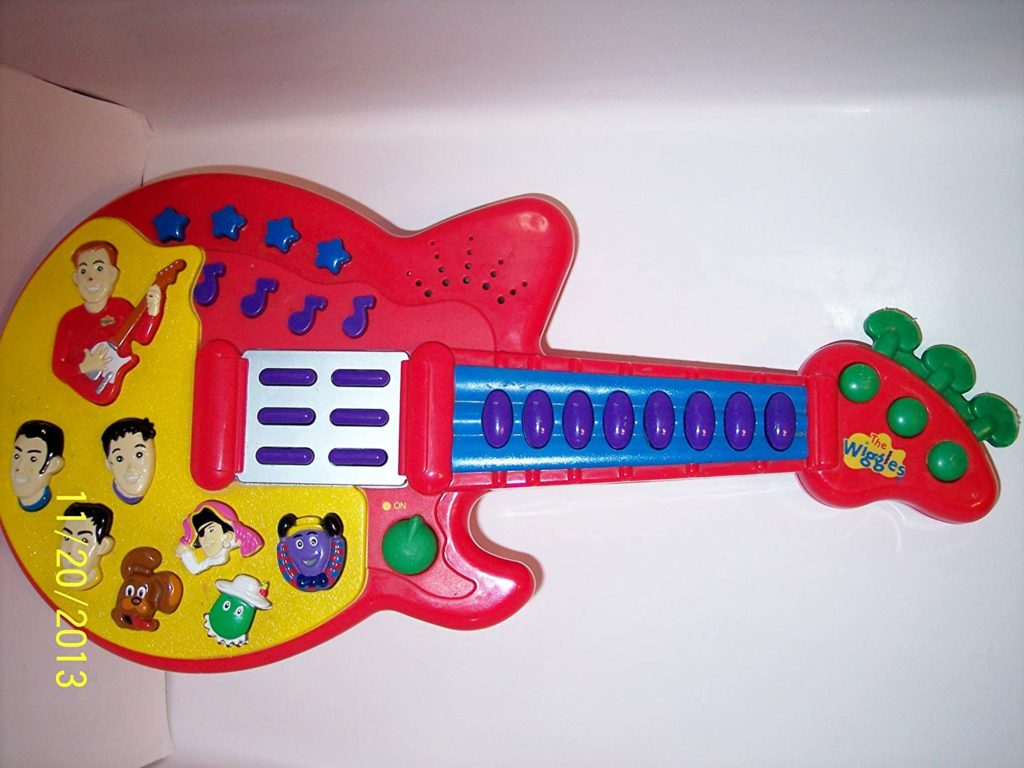
This was an absolutely amazing find and I was extremely excited to begin circuit bending it. For comparison, here is a video I found demonstrating how the guitar originally sounded:
To begin, I took out the multiple screws in the back to expose the circuit board:
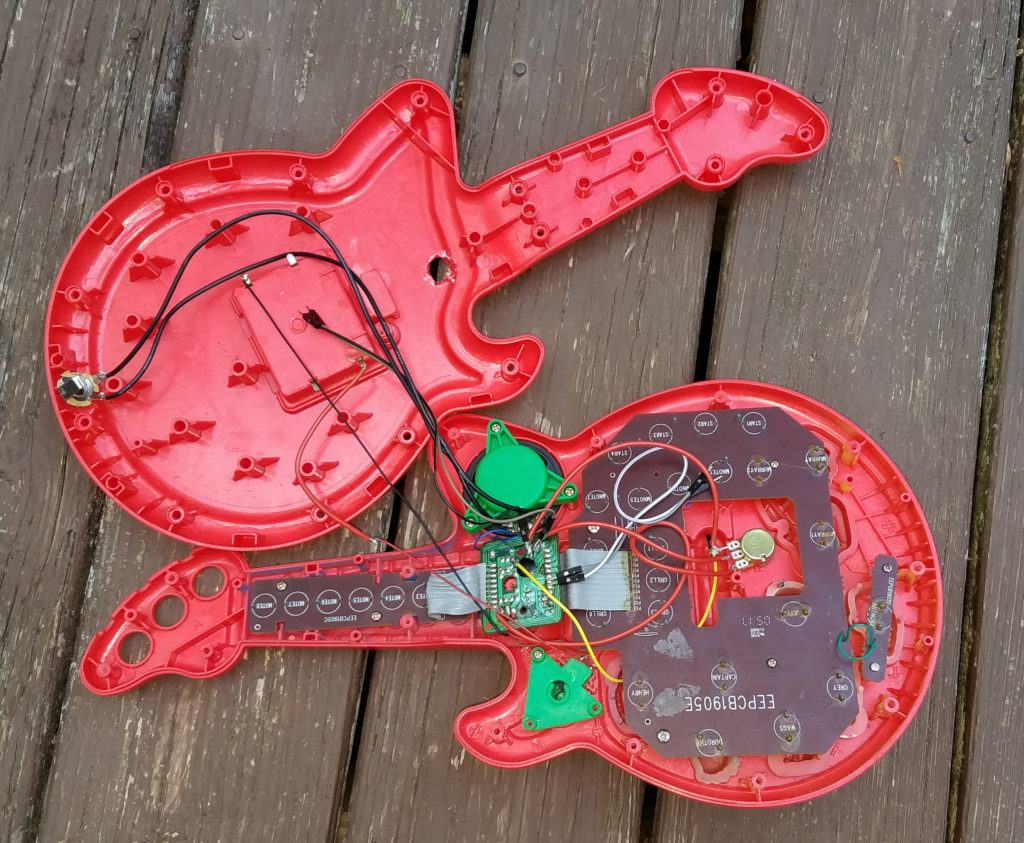
With the power on, I began probing the exposed solder points. I ended up finding out that if I bridged the two connections circled in red, the pitch of the guitar would increase:
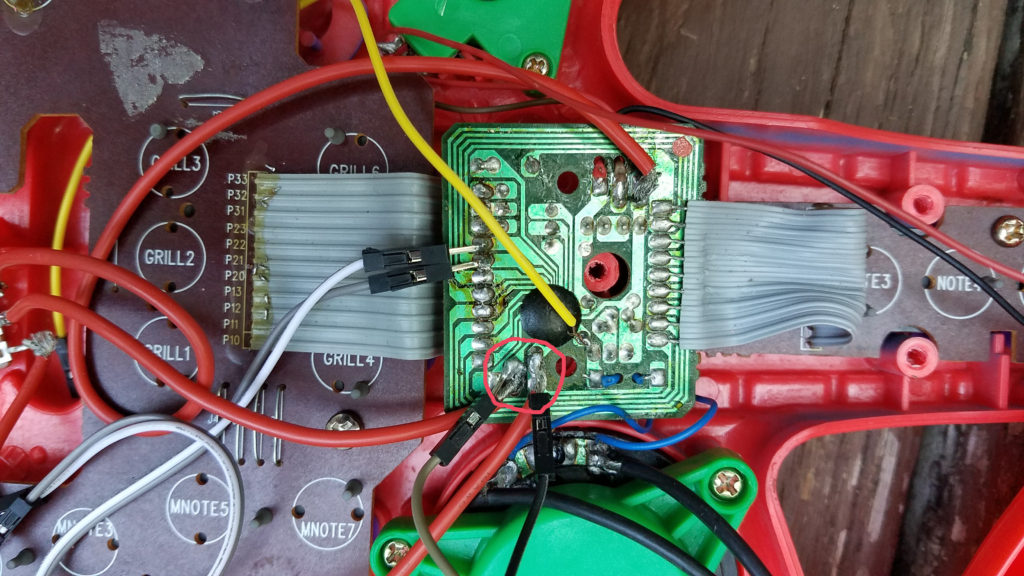
Through my research, I discovered that if I soldered two pins from a potentiometer to these points and one to the battery area’s negative terminal, I would have a knob that would alter the pitch. The potentiometer works by adjusting the amount of voltage getting through the circuit when the knob is turned. When more voltage is allowed through the circuit, the pitch goes up. When less voltage is allowed, the pitch goes down. I drilled a hole in the front of the guitar’s case, mounted the potentiometer, and soldered the wires from the potentiometer to the circuit board points:
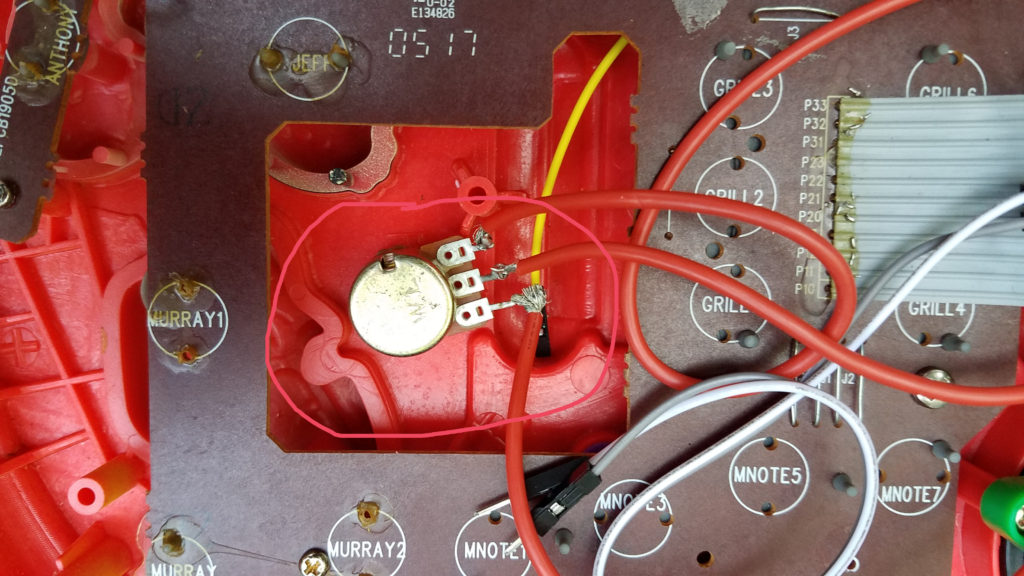
I also added a mono ¼ inch audio jack like you would find on a real guitar. This was easily accomplished by soldering the two prongs on the jack to the two speaker terminals. I drilled a hole toward the bottom of the guitar, and mounted the jack.
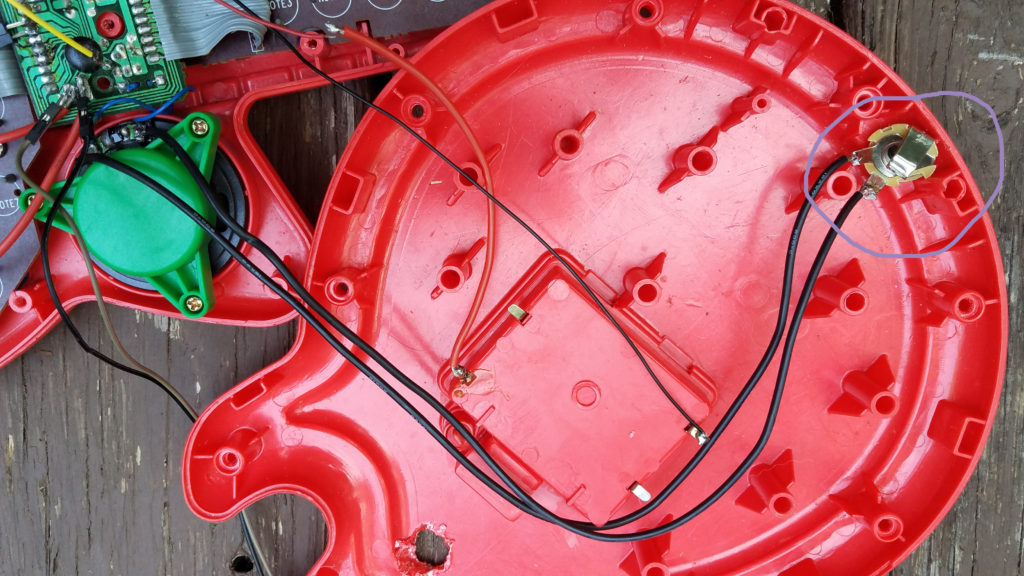
Although there were certainly more bends to be discovered, I was satisfied for the time being. Once everything was in its place, the case was screwed back together. Here is a short video showcasing some of the sounds that this guitar can now make:
Overall, I think this turned out to be an awesome instrument, and I was very happy with the results. The over all cost for everything, including the guitar was about four dollars.
Here is a general disclaimer if you decided to try circuit bending for yourself:
1) Do not try this process on anything that plugs into the wall. Use only battery powered toys or keyboards, or else it can be dangerous. With battery powered devices, there is no risk of electric shock.
2) The older the electronic device the better. Everything past about 2005 uses extremely small components that are difficult to bend.
3) Do not attempt this on anything you are not willing to destroy. Often times during circuit bending causes the device will crash but can be brought back to life simply by turning it off and on again. However, sometimes the components do get fried, and the device gets destroyed. This is why I only use cheap things found at thrift stores.
I hope you have enjoyed learning a little bit about the art of circuit bending. I will continue to create new instruments as I find them at the thrift store. My future projects will be more in depth, as I have only scratched the surface of what is possible.
